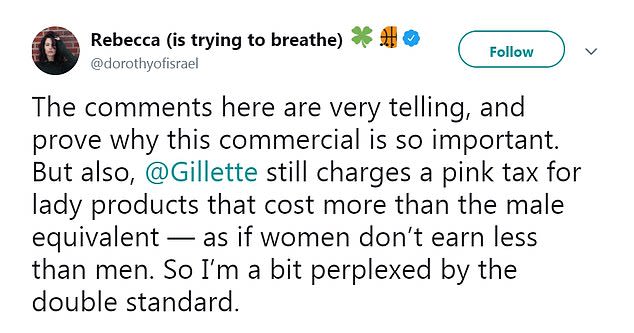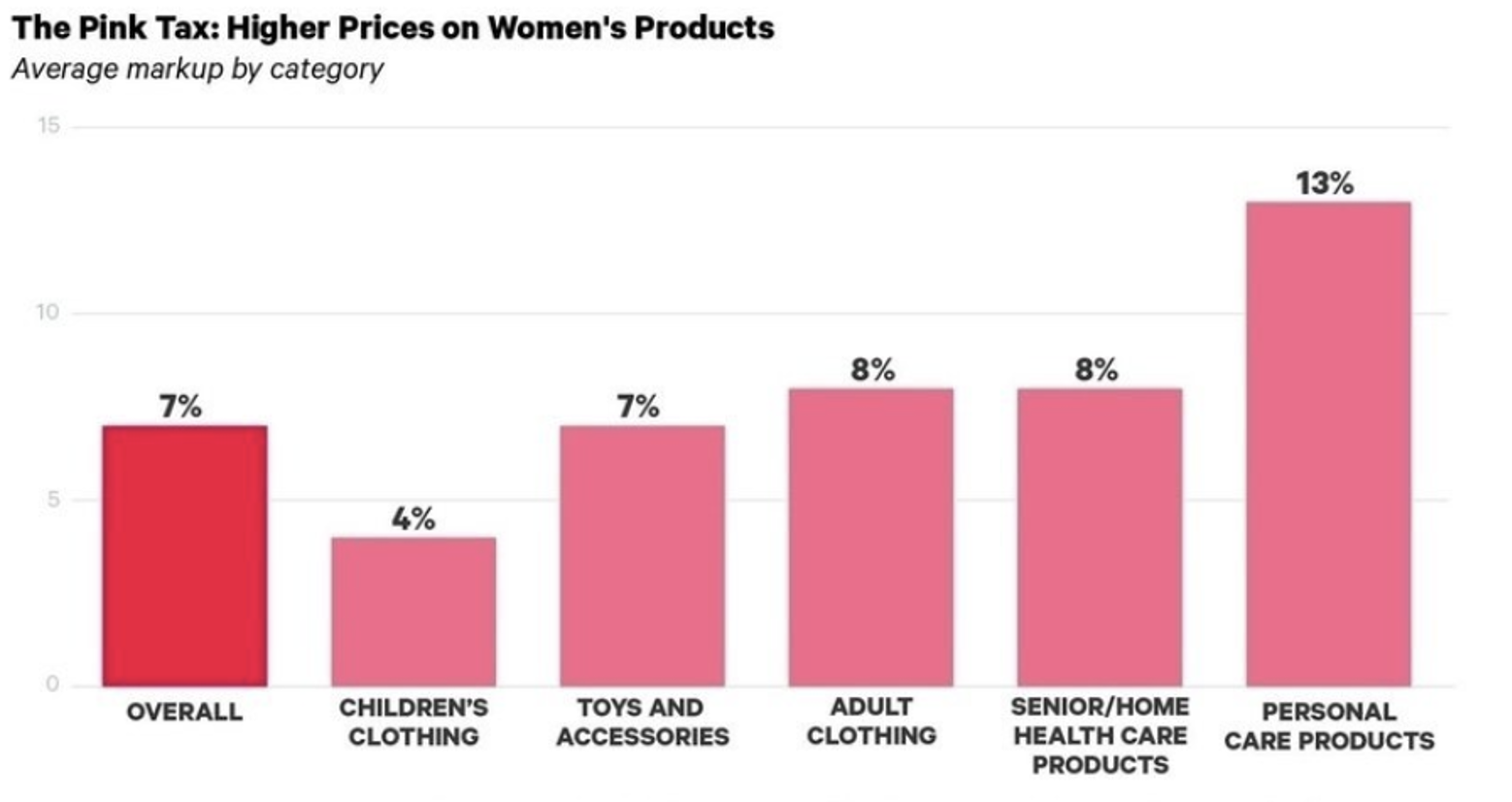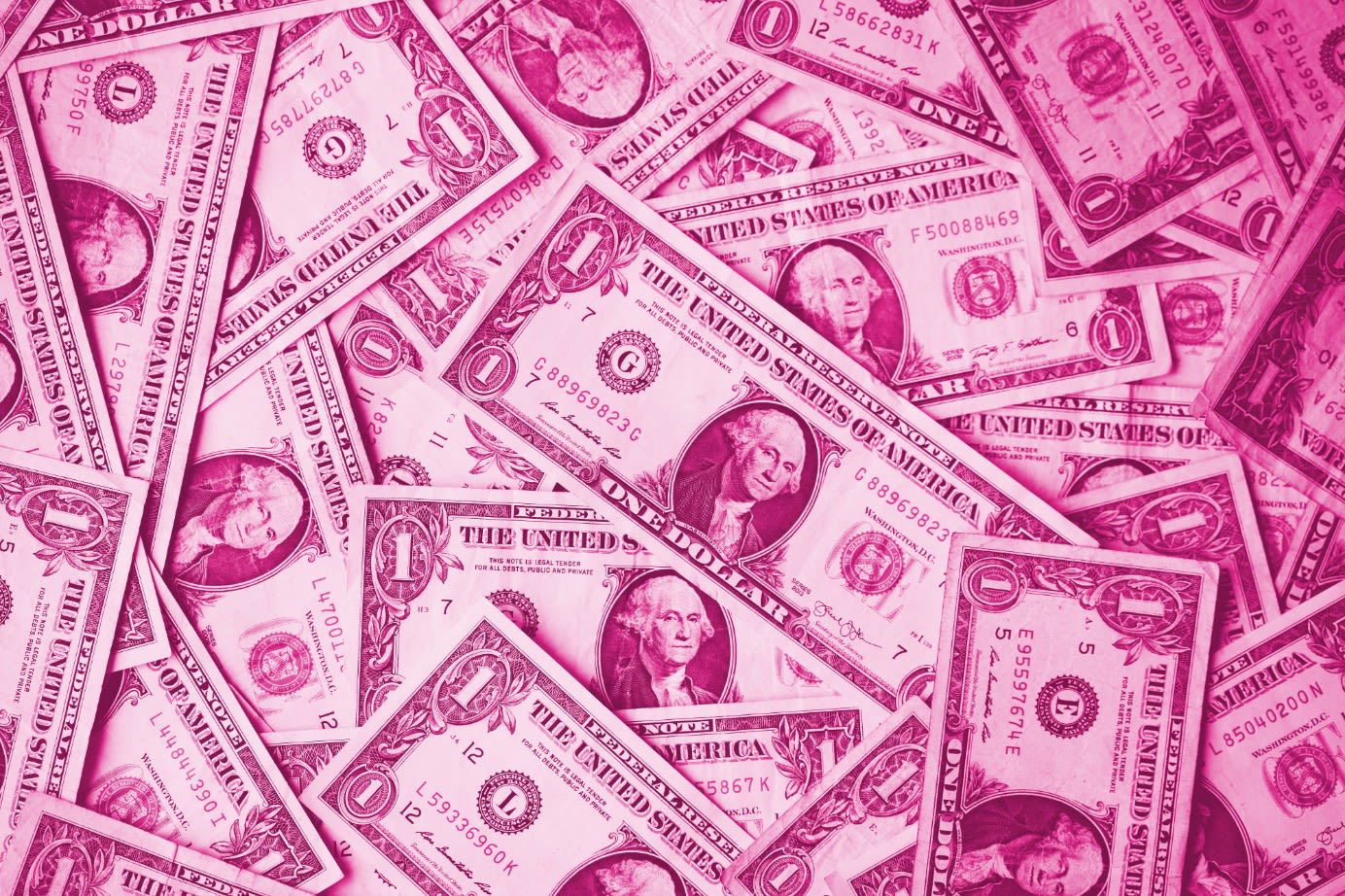THE PRICE OF GENDER INEQUALITY: THE PINK TAX

THE PINK TAX
Women are expected to conform to very strict beauty ideals from a young age, whether it is wearing makeup, shaving, or being the perfect weight – the ‘pink tax’ is a reflection of the endless expectations that women need to conform to. The pink tax is a widely known issue within contemporary society, it refers to the tendency for women's products to be more expensive compared to those marketed towards men.

Oftentimes, this price difference is observed in beauty and hygiene products, but it also extends to services such as haircuts and even children's toys. On the surface, this appears to be a subtle difference in price, but the pink tax reflects deep inequalities and expectations about what women should strive to look like.







HOW DOES IT AFFECT WOMEN?
The Pink Tax scheme negatively affects women through its ability to solidify unrealistic beauty standards for women. Noticeably, Pink Tax seems to primarily occur within products that enhance appearance. For example, 'female' razors were reportedly on average 9% more expensive than men's razors (Moshary, S., Tuchman, A. and Vajravelu, N., 2023). Oddly enough the only thing that differentiates between some of these gendered razors, is the colour.

This on a much larger scale perpetuates the continuation of a hegemonic society Where men are considered superior to women. This is a consequence of the pink tax scheme as forcibly; women feel obliged to purchase these pink taxed items. Consequently, this means that women remain in the lower economic percentile due to earning less income in comparison to men and paying more for products due to pink taxed items. The pink tax scheme continues to be a pivotal part in the inability for society to progress through gendered tropes, and it will continue to negatively affect women if society does not choose economic growth, at the expense of inequality between men.
"If one buys products traditionally marketed towards men, one can save roughly $1,000 per year or more" (Kopplin, 2019).

Within society the pressure that is placed on women to look a certain way means that women feel as though they need to give into these pink taxed products. For instance, women are considered more socially desirable when they are hairless. Because of this societal pressure, women continue to purchase things as such ‘female’ razors even at a higher price than ‘male’ razors which creates a never-ending cycle to which allows the pink tax scheme to carry on as a present economic strategy due to the gendered tropes that have depicted society.

THE HIDDEN PINK TAX

Many items which fall under the pink tax umbrella are not often thought about. This is because the difference in price or advertisement is not as strikingly obvious as some of the bright pink self-care products or clothing items. Contraception for example is often needed by those who menstruate for health-related reasons, as well as contraceptive reasons. Because most contraception is aimed towards those with a uterus the added cost of nurse's visits and prescriptions often fall on women. The cost of period products also disproportionately effects women as a disproportionate amount of women menstruate, this is because period products are seen as a ‘luxury’ item rather than a necessity. This means that when purchasing menstrual items, you still must pay GST on them, and that as inflation and cost of living occurs the price of menstrual products continue to go up as well. This has led to many women paying that much for each year for period products and has made it difficult for many women in poverty to afford this essential.

Clothing is another area where we would not expect to find the pink tax. However many women's clothes come with a higher price tag than men's. Women tend to buy more clothing items than men because societal expectations under capitalistic society dictate that women should wear different dresses and outfits for events. In contrast, it is generally more socially acceptable for men to wear the same suit on multiple occasions. This bias is further translated into necessary clothing items such as school uniforms - the University of Otago found that traditionally feminine uniforms' cost more than the traditionally masculine uniforms.
IS IT ETHICAL TO PRESSURE WOMEN INTO PAYING MORE FOR THE SAME PRODUCT?
Several studies suggest that the pink tax exists because women are willing to pay more, but we suggest that women are socialised into thinking they need to look beautiful. So, is this price disparity truly justified? Many companies justify this price disparity by arguing that women are willing to pay more for products suited to their needs and preferences (Dholakia, 2019). Many personal care items such as soap, shampoo and deodorant often have similar active ingredients but only differ in scent. It is not a desire to pay more for these products it’s the avoidance of smelling like a masculine product. Women are obligated to pay extra for these ‘female’ versions of products. The goal of advertising is to convince women they are far from the ideal in terms of attractiveness. To remedy this, women feel the need to buy these expensive beauty products. Female consumers are exploited by the companies who profit from this.

THE PINK TAX AND CAPITALISM
The pink tax exists because it is profitable. If corporations can get away with charging consumers more for things, they will. Women are taken advantage of by companies to gain maximum profit. Advertising also plays a role in the pink tax. The goal of advertising is to convince women they are far from the ideal in terms of attractiveness. To remedy this, women need to buy these expensive beauty products. We can see that there is a direct relationship between capitalism and the reproduction of gender bias. The pink tax is a mere justification for capitalism to discriminate against women.
References
Kopplin, E. (2019, February 19). KOPPLIN: Pink tax takes advantage of consumers in unnecessary ways. The Daily Nebraskan. https://www.dailynebraskan.com/opinion/kopplin-pink-tax-takes-advantage-of-consumers-in-unnecessary-ways/article_8988b418-2e67-11e9-89f0-9fc147839e49.html
Mattimore, D. M. (2016, December 3). The pink tax. Inequality. https://medium.com/inequality/the-pink-tax-e43a18374e1d
Lourens M. (2022, January 27) Pricey and Impractical: Girls on the losing end of school uniform equation https://www.stuff.co.nz/national/education/127616926/pricey-and-impractical-girls-on-the-losing-end-of-school-uniform-equation
Park A. (2022 August 8) How inflation impacts the pink tax and period product industry https://money.usnews.com/money/personal-finance/spending/articles/the-pink-tax-how-inflation-impacts-the-period-product-industry

